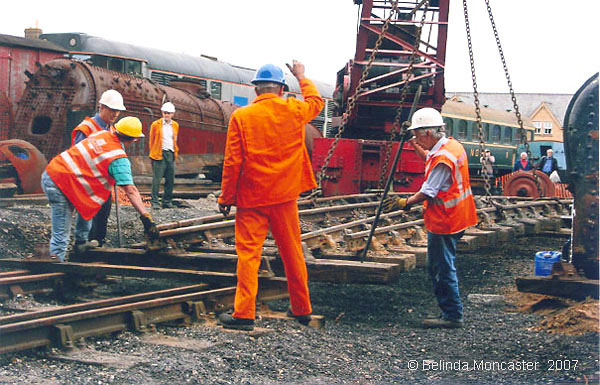
Historical Background
The Preservation Era
A surprisingly high proportion of all the breakdown cranes made for Britain’s railways have entered preservation, and roughly half of them are in serviceable order. But how many of them are steam powered, what makes them so appealing to heritage railways, and what are the advantages of operating them?
Of the total of 176 breakdown cranes that appeared on the British railway system from 1875, approximately one in five entered preservation and about half of these are in working order today.
It is generally said that steam on British Railways finished in 1968. This is not entirely true as steam continued to power breakdown cranes for many years after. All but four of the 55 cranes operating on British Railways in 1970 were steam driven and the majority of these continued with steam through to withdrawal by BR, in the late-1980s in some cases. Of the 34 breakdown cranes in preservation at the start of 2010, 26 were steam powered.
A breakdown crane can be a useful tool for a heritage railway, being capable of finely controlled lifting/placing of loco boilers and carriages (off and on bogies for instance) as well as assisting in track, bridge, signals and turntable work, and for other lifting tasks that are within its reach and capacity. It can be convenient to have a working crane always to hand as this obviates the need to organise an external hire in advance of a lift and then trust that the weather and other factors will allow the operation to go ahead and to reach completion within the agreed hire period. A railway crane can also often access parts of the system excluded to road-going mobiles. A further benefit to heritage railways is that breakdown cranes are very popular for galas and photo charters.

Turning a boiler at North Yorks Moors Railway

Restructuring the sidings at Nene Valley Railway

Entertaining the public at Nene Valley Railway
An operational steam-powered breakdown crane is required to meet similar insurance parameters to a passenger or goods locomotive; in particular it must undergo a thorough steam system examination by an insurance company’s examiner before it can be put into operation, and annual insurance inspections are required thereafter.
However, unlike locomotive fire-tube boilers, the vertical water-tube boilers fitted to most steam breakdown cranes are not normally required to undergo a full ten-yearly stripdown, the reason being that the large washout doors of a crane's vertical boiler facilitate a thorough examination of its internal condition to be conducted with it in situ; also water-tubes wear more slowly than fire-tubes.
When an overhaul of a crane's vertical water-tube boiler is eventually required, the work involved is generally less expensive than for a horizontal boiler fitted to a passenger or goods train locomotive. For instance the vertical boiler is normally far easier and quicker to remove if so required, and it has shorter tubes which will thus be cheaper to renew.
Formal insurance company inspection of the lifting apparatus at specified intervals is also mandatory, but so long as the ropes and other critical items are given due care and attention, maintaining a breakdown crane in working order should not be too demanding on a heritage railway’s purse.
